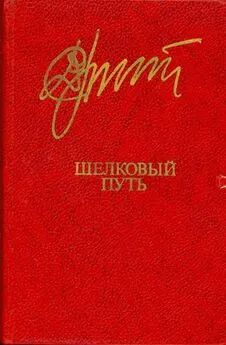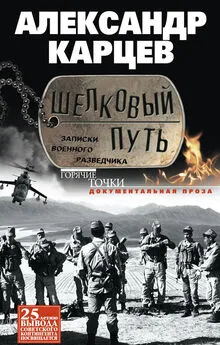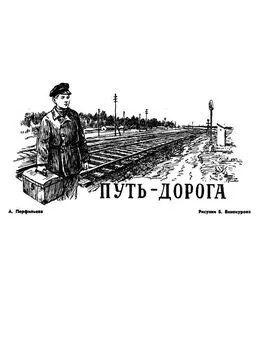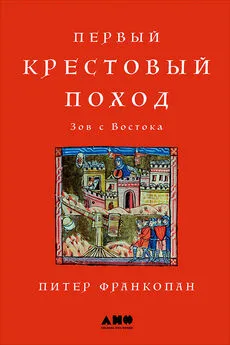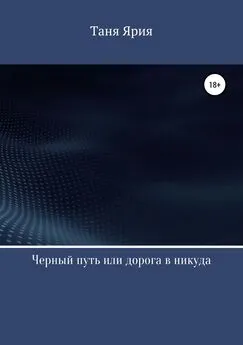Питер Франкопан - Шелковый путь. Дорога тканей, рабов, идей и религий
- Название:Шелковый путь. Дорога тканей, рабов, идей и религий
- Автор:
- Жанр:
- Издательство:Литагент 5 редакция
- Год:2017
- Город:Москва
- ISBN:978-5-699-95706-4
- Рейтинг:
- Избранное:Добавить в избранное
-
Отзывы:
-
Ваша оценка:
Питер Франкопан - Шелковый путь. Дорога тканей, рабов, идей и религий краткое содержание
Вы увидите, что история развивалась совсем не так, как мы привыкли изучать в школе. Так, столетия назад интеллектуальные центры мира, «Оксфорды» и «Кембриджи», «Гарварды» и «Йели», находились не в Европе, а в городах Средней Азии, куда и съезжалась вся просвещенная молодежь в поисках успеха.
Шелковый путь. Дорога тканей, рабов, идей и религий - читать онлайн бесплатно ознакомительный отрывок
Интервал:
Закладка:
260
T. Daryaee (ed. and tr.), Šahrestānīhā-ī Ērānšahr: A Middle Persian Text on Late Antique Geography, Epic and History (Costa Mesa, CA, 2002).
261
M. Morony, ‘Land Use and Settlement Patterns in Late Sasanian and Early Islamic Iraq’, in Cameron, King and Haldon, The Byzantine and Early Islamic Near East , 2, рр. 221–229; F. Rahimi-Laridjani, Die Entwicklung der Bewässerungslandwirtschaft im Iran bis Sasanidisch-frühislamische zeit (Weisbaden, 1988); R. Gyselen, La géographie administrative de l’empire sasanide: les témoignages sigilographiques (Paris, 1989).
262
Р. Pourshariati, Decline and Fall of the Sasanian Empire: The Sasanian-Parthian Confederacy and the Arab Conquest of Iran (London, 2009), рр. 33–60. Также см. Z. Rubin, ‘The Reforms of Khusro Anushirwān’, in Cameron, Islamic Near East , 3, рр. 225–297.
263
A. Taffazoli, ‘List of Trades and Crafts in the Sassanian Period’, Archaeologische Mitteilungen aus Iran 7 (1974), рр. 192–196.
264
R. Frye, ‘Sasanian Seal Inscriptions’, in R. Stiehl and H. Stier, Beiträge zur alten Gesichte und deren Nachleben , 2 vols (Berlin, 1969–1970), 1, рр. 79–84; J. Choksy, ‘Loan and Sales Contracts in Ancient and Early Medieval Iran’, Indo-Iranian Journal 31 (1988), р. 120.
265
Daryaee, ‘Persian Gulf Trade’, 1–16.
266
E. de la Vaissière, Histoire des marchands sogdiens (Paris, 2002), рр. 155–161, 179–231. N. Sims-Williams, ‘The Sogdian Merchants in China and India’, in Cadonna and L. Lanciotti (eds), Cina e Iran: da Alessandro Magno alla dinastia Tang (Florence, 1996), рр. 45–67; J. Rose, ‘The Sogdians: Prime Movers between Boundaries’, Comparative Studies of South Asia, Africa and the Middle East 30.3 (2010), 410–419.
267
F. Thierry and C. Morrisson, ‘Sur les monnaies Byzantines trouvés en Chine’, Revue numismatique 36 (1994), рр. 109–145; L. Yin, ‘Western Turks and Byzantine Gold Coins Found in China’, Transoxiana 6 (2003); B. Marshak and W. Anazawa, ‘Some Notes on the Tomb of Li Xian and his Wife under the Northern Zhou Dynasty at Guyuan, Ningxia and its Gold-Gilt Silver Ewer with Greek Mythological Scenes Unearthed There’, Cultura Antiqua 41.4 (1989), рр. 54–57.
268
D. Shepherd, ‘Sasanian Art’, in Cambridge History of Iran , 3.2, рр. 1085–1086.
269
О Пасхе – Eusebius, Vita Constantini , 3.18, р. 90. Примеры законодательства в отношении смешанных браков – Codex Theodosianus , 16.7, р. 466; 16.8, рр. 467–468.
270
L. Feldman, ‘Proselytism by Jews in the Third, Fourth and Fifth Centuries’, Journal for the Study of Judaism 24.1 (1993), рр. 9–10.
271
Там же, р. 46.
272
Р. Schäfer, Jesus in the Talmud (Princeton, 2007); Р. Schäfer, M. Meerson and Y. Deutsch (eds), Toledot Yeshu (‘The Life Story of Jesus’) Revisited (Tübingen, 2011).
273
G. Bowersock, ‘The New Greek Inscription from South Yemen’, in A. Sedov and J. – F. Salles (eds), Qāni’: le port antique du Ḥaḍramawt entre la Méditerranée, l’Afrique et l’Inde: fouilles russes 1972, 1985–1989, 1991, 1993–1994 (Turnhout, 2013), рр. 393–396.
274
J. Beaucamp, F. Briquel-Chatonnet and C. Robin (eds), Juifs et chrétiens en Arabie aux Ve et VIe siècles: regards croisés sur les sources (Paris, 2010); C. Robin, ‘Joseph, dernier roi de Himyar (de 522 à 525, ou une des années suivantes)’, Jerusalem Studies in Arabic and Islam 34 (2008), рр. 1–124.
275
G. Bowersock, The Throne of Adulis: Red Sea Wars on the Eve of Islam (Oxford, 2013), рр. 78–91.
276
Brock, ‘Church of the East’, р. 73.
277
Walker, The Legend of Mar Qardagh ; text, рр. 19–69.
278
Y. Saeki, The Nestorian Documents and Relics in China (2nd edn, Tokyo, 1951), рр. 126–127; D. Scott, ‘Christian Responses to Buddhism in Pre-Medieval Times’, Numen 32.1 (1985), рр. 91–92.
279
См. E. Pagels, The Gnostic Gospels (New York, 1979); H. – J. Klimkeit, Gnosis on the Silk Road: Gnostic Texts from Central Asia (San Francisco, 1993); K. King, What is Gnosticism? (Cambridge, MA, 2003).
280
Р. Crone, ‘Zoroastrian Communism’, Comparative Studies in Society and History 36.4 (1994), 447–462; G. Gnoli, ‘Nuovi studi sul Mazdakismo’, in Convegno internazionale: la Persia e Bisanzio (Rome, 2004), рр. 439–456.
281
Hui Li, Life of Hiuen-tsang , tr. Samuel Beal (Westport, CT, 1973), р. 45.
282
Там же, р. 46; R. Foltz, ‘When was Central Asia Zoroastrian?’, Mankind Quarterly (1988), рр. 189–200.
283
S. Beal, Buddhist Records of the Western World (New Delhi, 1969), рр. 44–46.
284
G. Mitchell and S. Johar, ‘The Maratha Complex at Ellora’, Modern Asian Studies 28.1 (2012), рр. 69–88.
285
Раскопки и исследования были проведены в 1970-х годах командами из Японии и Афганистана, см. T. Higuchi, Japan-Afghanistan Joint Archaeological Survey 1974, 1976, 1978 (Kyoto, 1976–1980).
286
О датировании комплекса Бамиан с 600 года, см. D. Klimburg-Salter, ‘Buddhist Painting in the Hindu Kush c. VIIth to Xth Centuries: Reflections of the Co-existence of Pre-Islamic and Islamic Artistic Cultures during the Early Centuries of the Islamic Era’, in E. de la Vaissière, Islamisation de l’Asie Centrale: processus locaux d’acculturation du VIIe au XIe siècle (Paris, 2008), рр. 140–142; также см. F. Flood, ‘Between Cult and Culture: Bamiyan, Islamic Iconoclasm, and the Museum’, Art Bulletin 84.4 (2002), р. 641ff. Информация есть также здесь L. Morgan, The Buddhas of Bamiyan (London, 2012).
287
Цитируется по Power, Red Sea , р. 58.
288
I. Gillman and H. – J. Klimkeit, Christians in Asia before 1500 (Ann Arbor, 1999), рр. 265–305.
289
G. Stroumsa, Barbarian Philosophy: The Religious Revolution of Early Christianity (Tübingen, 1999), рр. 80, 274–281.
290
J. Choksy, ‘Hagiography and Monotheism in History: Doctrinal Encounters between Zoroastrianism, Judaism and Christianity’, Islam and Christian - Muslim Relations 14.4 (2010), рр. 407–421.
291
Pseudo-Dionysius of Tel Mahre, Chronicle (Known Also as the Chronicle of Zuqnin), Part III , tr. W. Witaksowski (Liverpool, 1996), р. 77.
292
Procopius, Hyper ton polemon , 2.22–3, in History of the Wars, Secret History, Buildings , ed. and tr. H. Dewing, 7 vols (Cambridge, MA), 1, рр. 450–472.
293
M. Morony, ‘“For Whom Does the Writer Write?”: The First Bubonic Plague Pandemic According to Syriac Sources’, in K. Lester (ed.), Plague and the End of Antiquity: The Pandemic of 541–750 (Cambridge, 2007), р. 64; D. Twitchett, ‘Population and Pestilence in T’ang China’, in W. Bauer (ed.), Studia Sino-Mongolica (Wiesbaden, 1979), 42, р. 62.
294
Р. Sarris, Economy and Society in the Age of Justinian (Cambridge, 2006); также ‘Plague in Byzantium: The Evidence of Non-Literary Sources’, in Lester, Plague and the End of Antiquity , рр. 119–134; A. Cameron, The Mediterranean World in Late Antiquity: AD 395–700 (London, 1993), р. 113ff; D. Stathakopoulos, Famine and Pestilence in the Late Roman and Early Byzantine Empire: A Systematic Survey of Subsistence Crises and Epidemics (Birmingham, 2004), рр. 110–165.
295
Sarris, Empires of Faith , р. 145ff.
296
Procopius, The Secret History , tr. Р. Sarris (London, 2007), р. 80.
297
John of Ephesus, Ecclesiastical History , 6.24, tr. R. Р. Smith (1860), р. 429.
298
M. – T. Liu, Die chinesischen Nachrichten zur Geschichte der Ost-Türken (T’u-küe), 2 vols (Wiesbaden, 2009), 1, р. 87. Также см. J. Banaji, ‘Precious-Metal Coinages and Monetary Expansion in Late Antiquity’, in F. De Romanis and S. Sorda (eds), Dal denarius al dinar: l’oriente e la monetà romana (Rome, 2006), рр. 265–303.
299
The History of Menander the Guardsman , tr. R. Blockley (Liverpool, 1985), р. 121–123.
300
Там же, рр. 110–117.
301
Sarris, Empires of Faith , рр. 230–231.
302
Menander the Guardsman , рр. 173–175.
303
Об источниках см. Greatrex and Lieu, Roman Eastern Frontier, Part II , рр. 153–158.
304
R. Thomson, The Armenian History Attributed to Sebeos. Part I: Translation and Notes (Liverpool, 1999), 8, р. 9.
305
Agathias, Historion , 2.24, р. 72.
306
G. Fisher, ‘From Mavia to al-Mundhir: Arab Christians and Arab Tribes in the Late Antique Roman East’, in I. Toral-Niehoff and K. Dimitriev (eds), Religious Culture in Late Antique Arabia (Leiden, 2012), р. x; M. Maas, ‘“Delivered from their Ancient Customs”: Christianity and the Question of Cultural Change in Early Byzantine Ethnography’, in K. Mills and A. Grafton (eds), Conversion in Late Antiquity and the Early Middle Ages (Rochester, NY, 2003), рр. 152–188.
307
R. Hoyland, ‘Arab Kings, Arab Tribes and the Beginnings of Arab Historical Memory in Late Roman Epigraphy’, in H. Cotton, R. Hoyland, J. Price and D. Wasserstein (eds), From Hellenism to Islam: Cultural and Linguistic Change in the Roman Near East (Cambridge, 2009), рр. 374–400.
308
M. Whittow, ‘Rome and the Jafnids: Writing the History of a Sixth-Century Tribal Dynasty’, in J. Humphrey (ed.), The Roman and Byzantine Near East: Some Recent Archaeological Research (Ann Arbor, 1999), рр. 215–233.
309
K. ʿAtahmina, ‘The Tribal Kings in Pre-Islamic Arabia: A Study of the Epithet malik or dhū al-tāj in Early Arabic Traditions’, al-Qanṭara 19 (1998), р. 35; M. Morony, ‘The Late Sasanian Economic Impact on the Arabian Peninsula’, Nāme-ye Irān-e Bāstān 1.2 (201/2), рр. 35–36; I. Shahid, Byzantium and the Arabs in the Sixth Century , 2 vols (Washington, DC, 1995–2009), 2.2, рр. 53–54.
Читать дальшеИнтервал:
Закладка:


